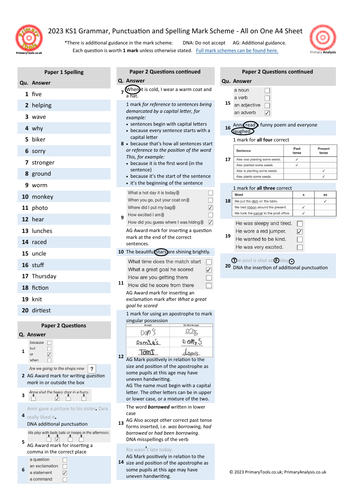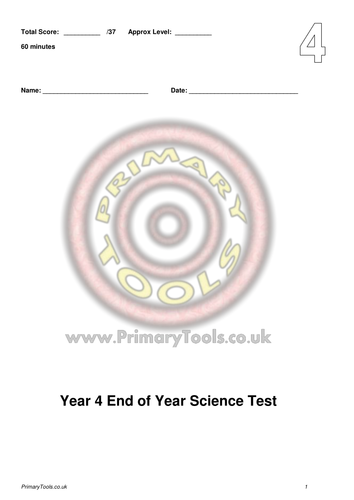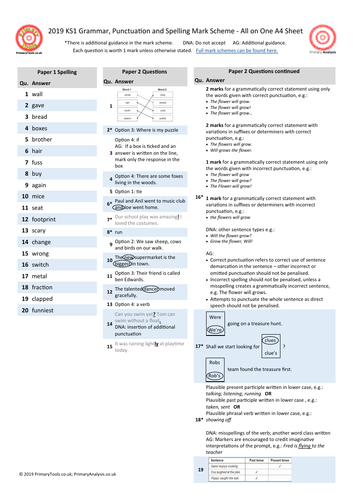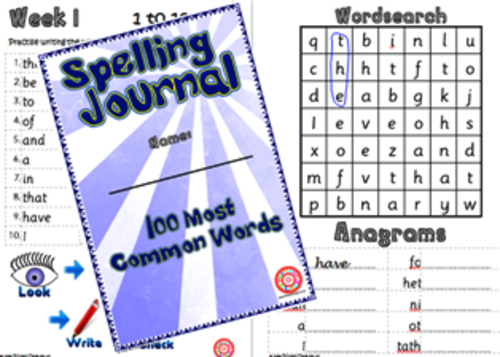
284Uploads
2082k+Views
2046k+Downloads
All resources

2022 Phonics Check Question Level Analysis
Summary of Features:
Pupil Summary shows total marks for each paper, number of questions unanswered, number of incorrect answers, total overall score (and percent), total score in each focus area. Option to adjust the colour thresholds to make it easier to spot patterns and gaps.
Pupil Reports show a summary of performance in each focus area for an individual pupil. Useful for feeding back to pupils, parents and informing intervention teachers.
Cohort Summary shows an overview of the cohort against each focus area. This page gives a summary of attainment including number and percent meeting the expected standard.
Other Charts Charts which show performance for each question, organised by most correct to incorrect and by word type.
Requires Excel with macros enabled.
Bundle

2022 KS1 and KS2 Test and Question Level Analysis Pack
2022 KS1 and KS2 Test and Question Level Analysis Pack
Includes all 2022 Analysis Tools for KS1 and KS2:
2022 KS1 SATs Grammar, Punctuation and Spelling Test and Question Level Analysis
2022 KS1 SATs Mathematics Test and Question Level Analysis
2022 KS1 SATs Reading Test and Question Level Analysis
2022 KS2 Grammar, Punctuation & Spelling Test and Question Level Analysis
2022 KS2 Mathematics Test and Question Level Analysis
2022 KS2 Reading Test and Question Level Analysis
2022 Phonics Check Question Level Analysis
Requires Excel with macros enabled.
Summary of Features (please note some features may not be available depending on the test type):
Questions Versus National compares the performance of your cohort against the performance of pupils nationally in each question. A powerful chart which instantly shows you which questions you are strong or weak on. As it uses national data, it considers the difficulty of each question, compares it the performance of your cohort and orders the results from strongest to weakest. 2016 to 2022 KS2 versions only, Q vs National will be added to the 2023 KS2 version at a later date.
Pupil Summary shows total marks for each paper, number of questions unanswered (possibly indicating need to increase pace), number of incorrect answers, total overall score (and percent), total score in each strand. Option to adjust the colour thresholds to make it easier to spot patterns and gaps.
Pupil Reports show a summary of performance in each strand for an individual pupils. Available in 2017 versions and later excluding reading. 2018 versions and later contain detailed feedback on each question. Useful for feeding back to pupils, parents and informing intervention teachers.
Contextual Analysis (2019 versions onwards) shows a breakdown by key groups (gender, SEND status, disadvantaged, EAL) plus up to four custom groups. Compares school data (grades and scaled scores) to national data in a detailed but user-friendly report.
Cohort Summary shows an overview of the cohort against each strand. This is also compared to national data where it is available. This page gives a summary of attainment including number and percent at expected and higher standard.
Strand Summary shows a the weighting of each strand and the performance within it. For example, in a grammar test a cohort may perform poorly in identifying sentence types and equally poorly in identifying punctuation. However as there is more weighting given to punctuation, it would be advisable to focus on this area.
Other Charts Charts which show performance for each question, organised by most correct to incorrect, by strand and also by year group question (for mathematics). The most powerful chart orders questions from most correct to incorrect enabling you to see precisely where there are strengths and weaknesses.
2022 KS1 and KS2 Test and Question Level Analysis Pack

2019 KS2 Mathematics Question Level Analysis
Summary of Features (please note some features may not be available depending on the test type):
Pupil Summary shows total marks for each paper, number of questions unanswered (possibly indicating need to increase pace), number of incorrect answers, total overall score (and percent), total score in each strand. Option to adjust the colour thresholds to make it easier to spot patterns and gaps.
Pupil Reports show a summary of performance in each strand for an individual pupils. Available in 2017 versions and later excluding reading. 2018 versions and later contain detailed feedback on each question. Useful for feeding back to pupils, parents and informing intervention teachers.
Cohort Summary shows an overview of the cohort against each strand. This is also compared to national data where it is available. This page gives a summary of attainment including number and percent at expected and higher standard.
Strand Summary shows a the weighting of each strand and the performance within it. For example, in a grammar test a cohort may perform poorly in identifying sentence types and equally poorly in identifying punctuation. However as there is more weighting given to punctuation, it would be advisable to focus on this area.
Other Charts Charts which show performance for each question, organised by most correct to incorrect, by strand and also by year group question (for mathematics). The most powerful chart orders questions from most correct to incorrect enabling you to see precisely where there are strengths and weaknesses.

2023 KS1 SATs Grammar, Punctuation and Spelling Test and Question Level Analysis
2023 KS1 Grammar, Punctuation and Spelling Test and Question Level Analysis
Requires Excel with macros enabled.
Summary of Features (please note some features may not be available depending on the test type):
Pupil Summary shows total marks for each paper, number of questions unanswered (possibly indicating need to increase pace), number of incorrect answers, total overall score (and percent), total score in each strand. Option to adjust the colour thresholds to make it easier to spot patterns and gaps.
Pupil Reports show a summary of performance in each strand for an individual pupils. Useful for feeding back to pupils, parents and informing intervention teachers.
Contextual Analysis shows a breakdown by key groups (gender, SEND status, disadvantaged, EAL) plus up to four custom groups. Compares school data (grades and scaled scores) to national data in a detailed but user-friendly report.
Cohort Summary shows an overview of the cohort against each strand. This is also compared to national data where it is available. This page gives a summary of attainment including number and percent at expected and higher standard.
Strand Summary shows a the weighting of each strand and the performance within it. For example, in a grammar test a cohort may perform poorly in identifying sentence types and equally poorly in identifying punctuation. However as there is more weighting given to punctuation, it would be advisable to focus on this area.
Other Charts Charts which show performance for each question, organised by most correct to incorrect, by strand and also by year group question (for mathematics). The most powerful chart orders questions from most correct to incorrect enabling you to see precisely where there are strengths and weaknesses.

2022 KS2 Grammar, Punctuation & Spelling Test and Question Level Analysis
2022 KS2 Grammar, Punctuation & Spelling Test and Question Level Analysis
Requires Excel with macros enabled.
Summary of Features:
Questions Versus National compares the performance of your cohort against the performance of pupils nationally in each question. A powerful chart which instantly shows you which questions you are strong or weak on. As it uses national data, it considers the difficulty of each question, compares it the performance of your cohort and orders the results from strongest to weakest. 2016 to 2022 KS2 versions only, Q vs National will be added to the 2023 KS2 version at a later date.
Pupil Summary shows total marks for each paper, number of questions unanswered (possibly indicating need to increase pace), number of incorrect answers, total overall score (and percent), total score in each strand. Option to adjust the colour thresholds to make it easier to spot patterns and gaps.
Pupil Reports show a summary of performance in each strand for an individual pupils. Available in 2017 versions and later excluding reading. 2018 versions and later contain detailed feedback on each question. Useful for feeding back to pupils, parents and informing intervention teachers.
Contextual Analysis (2019 versions onwards) shows a breakdown by key groups (gender, SEND status, disadvantaged, EAL) plus up to four custom groups. Compares school data (grades and scaled scores) to national data in a detailed but user-friendly report.
Cohort Summary shows an overview of the cohort against each strand. This is also compared to national data where it is available. This page gives a summary of attainment including number and percent at expected and higher standard.
Strand Summary shows the weighting of each strand and the performance within it. For example, in a grammar test a cohort may perform poorly in identifying sentence types and equally poorly in identifying punctuation. However as there is more weighting given to punctuation, it would be advisable to focus on this area.
Other Charts Charts which show performance for each question, organised by most correct to incorrect, by strand and also by year group question (for mathematics). The most powerful chart orders questions from most correct to incorrect enabling you to see precisely where there are strengths and weaknesses.
2022 KS2 Grammar, Punctuation & Spelling Test and Question Level Analysis

2023 KS1 SATs Mathematics Test and Question Level Analysis
2023 KS1 Mathematics Test and Question Level Analysis
Requires Excel with macros enabled.
Summary of Features (please note some features may not be available depending on the test type):
Pupil Summary shows total marks for each paper, number of questions unanswered (possibly indicating need to increase pace), number of incorrect answers, total overall score (and percent), total score in each strand. Option to adjust the colour thresholds to make it easier to spot patterns and gaps.
Pupil Reports show a summary of performance in each strand and per question for an individual pupils. Useful for feeding back to pupils, parents and informing intervention teachers.
Contextual Analysis shows a breakdown by key groups (gender, SEND status, disadvantaged, EAL) plus up to four custom groups. Compares school data (grades and scaled scores) to national data in a detailed but user-friendly report.
Cohort Summary shows an overview of the cohort against each strand. This is also compared to national data where it is available. This page gives a summary of attainment including number and percent at expected and higher standard.
Strand Summary shows a the weighting of each strand and the performance within it. For example, in a grammar test a cohort may perform poorly in identifying sentence types and equally poorly in identifying punctuation. However as there is more weighting given to punctuation, it would be advisable to focus on this area.
Other Charts Charts which show performance for each question, organised by most correct to incorrect, by strand and also by year group question (for mathematics). The most powerful chart orders questions from most correct to incorrect enabling you to see precisely where there are strengths and weaknesses.

2023 KS1 SATs Grammar, Punctuation and Spelling Test Mark Scheme on a Page
2023 KS1 SATs Grammar, Punctuation and Spelling Test Mark Scheme on a Page

KS2 National Curriculum Tests Comparison - 2016 onwards (updated with 2023 tests)
An analysis and comparison of the KS2 National Curriculum Tests (SATs) from 2016 onwards.

2022 KS1 SATs Reading Test and Question Level Analysis
2022 KS1 Reading Test and Question Level Analysis
Requires Excel with macros enabled.
Summary of Features (please note some features may not be available depending on the test type):
Pupil Summary shows total marks for each paper, number of questions unanswered (possibly indicating need to increase pace), number of incorrect answers, total overall score (and percent), total score in each strand. Option to adjust the colour thresholds to make it easier to spot patterns and gaps.
Pupil Reports show a summary of performance in each strand and per question for an individual pupils. Useful for feeding back to pupils, parents and informing intervention teachers.
Contextual Analysis shows a breakdown by key groups (gender, SEND status, disadvantaged, EAL) plus up to four custom groups. Compares school data (grades and scaled scores) to national data in a detailed but user-friendly report.
Cohort Summary shows an overview of the cohort against each strand. This is also compared to national data where it is available. This page gives a summary of attainment including number and percent at expected and higher standard.
Strand Summary shows a the weighting of each strand and the performance within it. For example, in a grammar test a cohort may perform poorly in identifying sentence types and equally poorly in identifying punctuation. However as there is more weighting given to punctuation, it would be advisable to focus on this area.
Other Charts Charts which show performance for each question, organised by most correct to incorrect, by strand and also by year group question (for mathematics). The most powerful chart orders questions from most correct to incorrect enabling you to see precisely where there are strengths and weaknesses.

2023 KS1 SATs Reading Test & Comprehensive Question Analysis Tool
Boost Success: 2023 KS1 Reading Test & Question Analysis (Excel with Macros)
Summary of Features (features may vary based on test type):
Pupil Summary: View total marks, unanswered questions, incorrect answers, overall score, and scores in each strand. Customize color thresholds for pattern spotting.
Pupil Reports: Provide feedback on performance in strands and per question.
Contextual Analysis: Breakdown by key groups (gender, SEND, disadvantaged, EAL) and compare to national data.
Cohort Summary: Overview of cohort’s performance and compare to national standards.
Strand Summary: Weighting of strands and performance analysis.
Other Charts: Charts showing question performance and strengths/weaknesses.
Experience the power of this 2023 KS1 SATs Reading Test & Question Analysis Tool for educational insights, interventions, and student achievement.

Science Tests, Answers & Analysis for Yrs 3 to 5
End of Year Science Tests for Years 3 to 5.
Questions taken from past papers and based on the topics covered in QCA for science.
For year 3 test, would recommend splitting into 2 parts, and providing help with reading.
Would appreciate feedback, particularly in terms of the thresholds.

KS1 and KS2 2019 Grammar Punctuation and Spelling Mark Scheme on a Page
KS1 and KS2 2019 Grammar Punctuation and Spelling Mark Scheme on a Page

Pseudo (Non Words) Phonics Practice Cards
4 sample cards from a set of 38 to practice for Year 1 phonics screening check. Non word/pseudo words only. Paper and electronic class recording grid included. Based on Letters and Sounds Phase 2 to 4 samples.

2015-2016 School Assembly Year Planner
Over 250 events and the full 12 months of the academic year including...
Colour coded dates for awareness days/weeks/months
Key historical dates
Key religious dates
Key assessments dates (SATS, Phonics)
National holidays and more
Each event carries a link to more information
Excellent for planning assemblies
Over 10 new events added to the new 2015/16 Version
14/15 Version used in over 160 schools
Designed to be printed across two A3 sheets, although also prints well in A4

2017 KS2 National Curriculum Test for Reading Electronic Analysis
Works best in Excel 2010 or later with macros enabled
New features for the 2017 version include Age Related Expectations reporting and improved presentation of graphs

Letters & Sounds High Frequency Spelling Journals
Each week includes themed word list, practice space, wordsearch and anagrams. Notes and contents page also included.

2013 KS2 Grammar and Punctuation Test Analysis
Paper version of the electronic analysis of KS2 2013 L3-5 Grammar, Punctuation and Spelling Test. Other KS2 electronic/paper analysis tools available.




















